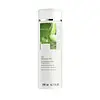What's inside
What's inside
 Key Ingredients
Key Ingredients

No key ingredients
 Benefits
Benefits

 Concerns
Concerns

 Ingredients Side-by-side
Ingredients Side-by-side

Water
Skin ConditioningCaprylic/Capric Triglyceride
MaskingGlyceryl Stearate
EmollientCetearyl Alcohol
EmollientAloe Barbadensis Leaf Juice
Skin ConditioningGlycerin
HumectantSorbitol
HumectantPhenoxyethanol
PreservativeCeteareth-20
CleansingDimethicone
EmollientCeteareth-12
EmulsifyingCetyl Palmitate
EmollientParfum
MaskingXanthan Gum
EmulsifyingBenzoic Acid
MaskingPrunus Amygdalus Dulcis Oil
Skin ConditioningDehydroacetic Acid
PreservativeEthylhexylglycerin
Skin ConditioningPropylene Glycol
HumectantPotassium Sorbate
PreservativeSodium Benzoate
MaskingNymphaea Alba Root Extract
Skin ConditioningWater, Caprylic/Capric Triglyceride, Glyceryl Stearate, Cetearyl Alcohol, Aloe Barbadensis Leaf Juice, Glycerin, Sorbitol, Phenoxyethanol, Ceteareth-20, Dimethicone, Ceteareth-12, Cetyl Palmitate, Parfum, Xanthan Gum, Benzoic Acid, Prunus Amygdalus Dulcis Oil, Dehydroacetic Acid, Ethylhexylglycerin, Propylene Glycol, Potassium Sorbate, Sodium Benzoate, Nymphaea Alba Root Extract
Water
Skin ConditioningCaprylic/Capric Triglyceride
MaskingSqualane
EmollientPropylene Glycol Dicaprylate/Dicaprate
EmollientPropylene Glycol
HumectantCorylus Avellana Seed Oil
EmollientPentylene Glycol
Skin ConditioningPrunus Amygdalus Dulcis Oil
Skin ConditioningGlyceryl Stearate
EmollientTriticum Vulgare Germ Extract
Skin ConditioningTocopheryl Acetate
AntioxidantEthyl Oleate
EmollientEthyl Linoleate
EmollientCetyl Palmitate
EmollientLaureth-7
EmulsifyingEthyl Linolenate
EmollientCetearyl Isononanoate
EmollientCeteareth-20
CleansingCeteareth-12
EmulsifyingCetearyl Alcohol
EmollientPolyacrylamide
C13-14 Isoparaffin
EmollientCaprylyl Glycol
EmollientP-Anisic Acid
MaskingWater, Caprylic/Capric Triglyceride, Squalane, Propylene Glycol Dicaprylate/Dicaprate, Propylene Glycol, Corylus Avellana Seed Oil, Pentylene Glycol, Prunus Amygdalus Dulcis Oil, Glyceryl Stearate, Triticum Vulgare Germ Extract, Tocopheryl Acetate, Ethyl Oleate, Ethyl Linoleate, Cetyl Palmitate, Laureth-7, Ethyl Linolenate, Cetearyl Isononanoate, Ceteareth-20, Ceteareth-12, Cetearyl Alcohol, Polyacrylamide, C13-14 Isoparaffin, Caprylyl Glycol, P-Anisic Acid
Ingredients Explained
These ingredients are found in both products.
Ingredients higher up in an ingredient list are typically present in a larger amount.
This ingredient is an emollient, solvent, and texture enhancer. It is considered a skin-softener by helping the skin prevent moisture loss.
It helps thicken a product's formula and makes it easier to spread by dissolving clumping compounds.
Caprylic Triglyceride is made by combining glycerin with coconut oil, forming a clear liquid.
While there is an assumption Caprylic Triglyceride can clog pores due to it being derived from coconut oil, there is no research supporting this.
Learn more about Caprylic/Capric TriglycerideWe don't have a description for Ceteareth-12 yet.
Ceteareth-20 is an emulsifier and cleansing agent. It is derived from cetearyl alcohol, a fatty alcohol.
As an emulsifier, Ceteareth-20 prevents oil and water from separating. It is also a surfactant. Surfactants help gather oil, pollution, and dirt to be washed away.
Cetearyl alcohol is a mixture of two fatty alcohols: cetyl alcohol and stearyl alcohol. It is mainly used as an emulsifier. Emulsifiers help prevent the separation of oils and products. Due to its composition, it can also be used to thicken a product or help create foam.
Cetearyl alcohol is an emollient. Emollients help soothe and hydrate the skin by trapping moisture.
Studies show Cetearyl alcohol is non-toxic and non-irritating. The FDA allows products labeled "alcohol-free" to have fatty alcohols.
This ingredient is usually derived from plant oils such as palm, vegetable, or coconut oils. There is debate on whether this ingredient will cause acne.
Due to the fatty acid base, this ingredient may not be Malassezia folliculitis safe.
Learn more about Cetearyl AlcoholCetyl Palmitate is a wax-like substance.
It comes from palmitic acid and palmityl alcohol. Cetyl Palmitate may not be safe for Malassezia folliculitis, or fungal-acne.
This ingredient is naturally found in the guava fruit and stony corals.
Learn more about Cetyl PalmitateGlyceryl Stearate is a mix of glycerin and stearic acid.
It is used to stabilize the mixing of water and oil ingredients. By preventing these ingredients from separating, it can help elongate shelf life. It can also help thicken the product's texture.
As an emollient, it helps soften skin and supports barrier-replenishing ingredients.
In cosmetics, Glyceryl Stearate is often made from vegetable oils or synthetically produced.
This ingredient may not be fungal-acne safe
Fun fact: The human body also creates Glyceryl Stearate naturally.
Learn more about Glyceryl StearatePropylene Glycol is an odorless, colorless liquid. As a humectant, it helps skin retain moisture. It also aids in delivering active ingredients.
Another role of this ingredient is preventing a product from melting or freezing. Propylene glycol also adds antimicrobrial properties to a product, elongating product lifespan.
This ingredient is considered an organic alcohol and commonly added into both cosmetics and foods.
Those with sensitive skin or conditions may develop a rash when using this ingredient.
Learn more about Propylene GlycolPrunus Amygdalus Dulcis Oil comes from the sweet almond, a tree native to Iran. This oil has no fragrance and is non-volatile.
Almonds contain healthy fats, vitamins, and minerals. It is a rich source of Vitamin E, a great antioxidant and skin conditioning ingredient. Sweet almond oil contains fatty acids such as linolenic acid and triglycerides.
The content of sweet almond oil makes it a great emollient; it can help soften and hydrate your skin. Emollients create a barrier over your skin to trap moisture in. Sweet almond oil has antioxidant properties.
Those with an almond allergy should be careful of this ingredient and speak with a professional about using it in your skincare.
This ingredient may not be fungal-acne safe.
Learn more about Prunus Amygdalus Dulcis OilWater. It's the most common cosmetic ingredient of all. You'll usually see it at the top of ingredient lists, meaning that it makes up the largest part of the product.
So why is it so popular? Water most often acts as a solvent - this means that it helps dissolve other ingredients into the formulation.
You'll also recognize water as that liquid we all need to stay alive. If you see this, drink a glass of water. Stay hydrated!
Learn more about Water